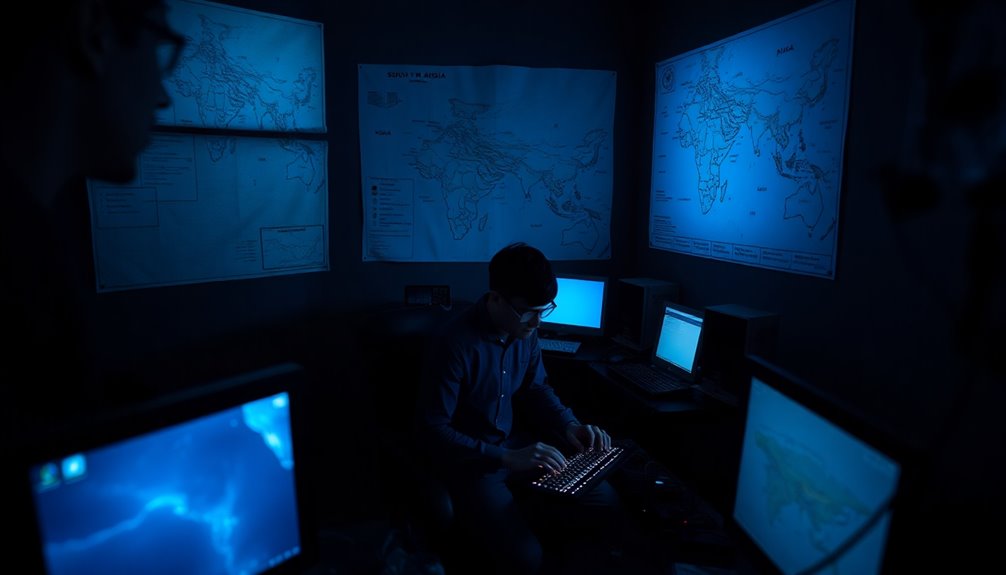
As tensions rise in South Asia, a sophisticated cyber espionage group known as APT-C-35, or the DoNot Team, is increasingly targeting the region, particularly the contested Kashmir area. This group, believed to be linked to the Indian government, has been active since at least 2013, although some sources suggest its operations began as early as 2010. Their primary motivation revolves around gathering intelligence for Indian government interests, making them a formidable force in the realm of cyber espionage.
You might find it alarming that APT-C-35 primarily targets government agencies, military organizations, foreign ministries, and even telecom companies. By focusing on these sectors, they seek to acquire sensitive information that could escalate geopolitical tensions, especially in the context of the Kashmir conflict. Their methods are sophisticated, often utilizing trojanized apps and exploiting vulnerabilities like CVE-2017-11882 to gain unauthorized access.
The group employs an array of attack techniques, including the deployment of malware such as Tanzeem, which collects sensitive data from Android devices. Their phishing campaigns are equally innovative, using platforms like OneSignal to lure unsuspecting users. You may be surprised to learn that they distribute malicious apps through trusted platforms, including Google Play, which poses a significant risk to users who don’t take precautions.
After gathering the necessary permissions, their malware often shuts down, making detection and response difficult. Ransomware attacks on critical infrastructure are also a growing concern in the region, highlighting the need for enhanced cybersecurity measures across all sectors.
In South Asia, the vulnerability of countries like India, Pakistan, Sri Lanka, and Bangladesh to such sophisticated attacks is concerning. Inadequate cybersecurity measures often leave these nations exposed, and the economic implications of cyber espionage can be significant. The ongoing cyber activities of APT-C-35 exacerbate the already tense geopolitical landscape, particularly given the unresolved Kashmir territorial dispute.
To combat such threats, organizations must implement effective cybersecurity measures. Regularly patching vulnerabilities is crucial, as is educating employees about phishing risks. Continuous network monitoring can help detect intrusions early, while ensuring apps are installed from trusted sources minimizes the risk of malware.
Encouraging international collaboration is essential for sharing intelligence and best practices to counter these advanced threats.
As you navigate this complex landscape, staying informed and vigilant is vital. APT-C-35 exemplifies the evolving nature of cyber threats, underscoring the need for robust cybersecurity strategies in an increasingly interconnected world.









